A Comprehensive Guide To Seo
Have you started your website recently and struggling to drive traffic on it?
Do you know about basics of SEO but have no idea how to use it for your own website?
Well, if this is the case, you are in the right place.
In this comprehensive guide of SEO, you will learn it from the start. So, even if you don’t know anything about it, you will have a good know-how about various techniques of SEO after going through this guide.
-
What Is SEO & Why It’s Important
-
People & Search Engines
-
Classification Of Search Queries
-
Different Types Of SEO Techniques
-
How To Structure Your Website
-
Off-Page SEO & Link Building
-
Keyword Research For SEO
-
Creating a Winning Content
To make it easy for you, I have divided this guide into 8 sections. Above is a quick link to each section, feel free to jump to any particular topic if you feel like.
1) What Is SEO & Why It’s Important
Now, what does SEO look like? And why on the Earth should you care?
The thing is, the majority of online experiences start with a search engine. And more than 75% searchers use Google to search anything online.
Did you know that the top 5 results on Google search engine results enjoy 67% of all the traffic? This number is enough to give you a fair idea why it is important to rank your website higher on the SERPs.
And SEO is the key to ranking.
If your article, product, or a blog is on the second page of the SERP, then there is no difference between your web page and the one that is not ranked at all.
To understand how to rank your website higher on the SERP, you first need to understand what SEO is.
What is SEO?
SEO or Search Engine Optimization is a process of improving your website’s position in the SERPs (Search Engine Result Pages). It basically helps you in increasing your organic or non-paid traffic.
The higher the position of your website on the SERP, the more people will see it.
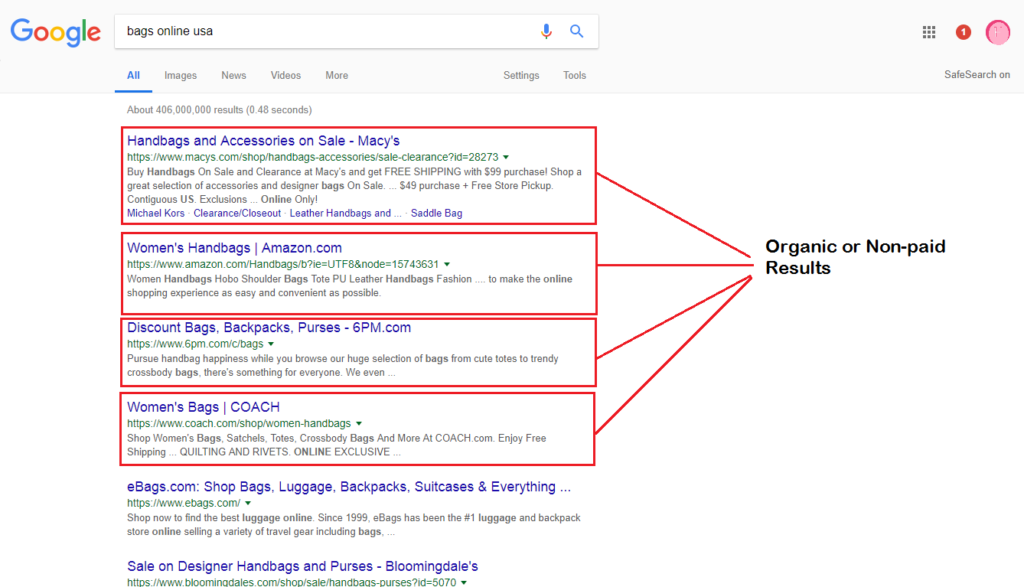
All this SEO thing started back in the 90s when search engines started to emerge. It was not practiced by many at that time, but now it has become an essential part of the digital marketing strategy of every business with an online presence.
SEO is a comprehensive subject with a lot of technical and analytical work. There are many techniques that you can use with various goals, however, at the end of the day, the purpose of every effort remains the same – to acquire the top position in the SERP.
In simpler words, with SEO you are attracting the right people for your business/website.
Now the question is, what do you need to rank your website higher on the SERP?
Well, this is neither an expensive theme nor a perfect structure of your website that you need to rank it higher.
The main ingredient for this purpose is high-quality content that is tailored according to the requirements of your target audience.
Quick Tip: If you are just starting out with the SEO, use a less popular keyword, or preferably, a long-tail keyword.
Even in the beginning if you find it difficult to learn SEO, don’t worry. A fail attempt teaches you a billion useful things, as Neil Patel said it.
Importance of SEO
In accordance with the competitive market today, SEO is far more important than ever.
It is far important than just appearing higher on the SERP. There are many points that can help you in clarifying the importance of SEO. Some of these points are:
Better Visibility and Branding
Millions of people visit search engines daily to find answers to their questions and solutions to their problems.
When these people search for a problem that you can help them with, or if they are looking for a similar service or a product that you are offering, you obviously want to appear higher on the SERP.
It is not just because you want them to click your website’s link and go through it. In fact, there are certain benefits in appearing at a good position in the SERP.
For example, most people just don’t search a term, click on a link, and that’s it.
Instead, they search for a term, go through the results, edit their search terms, check some websites, further refine their term, search again and so on.
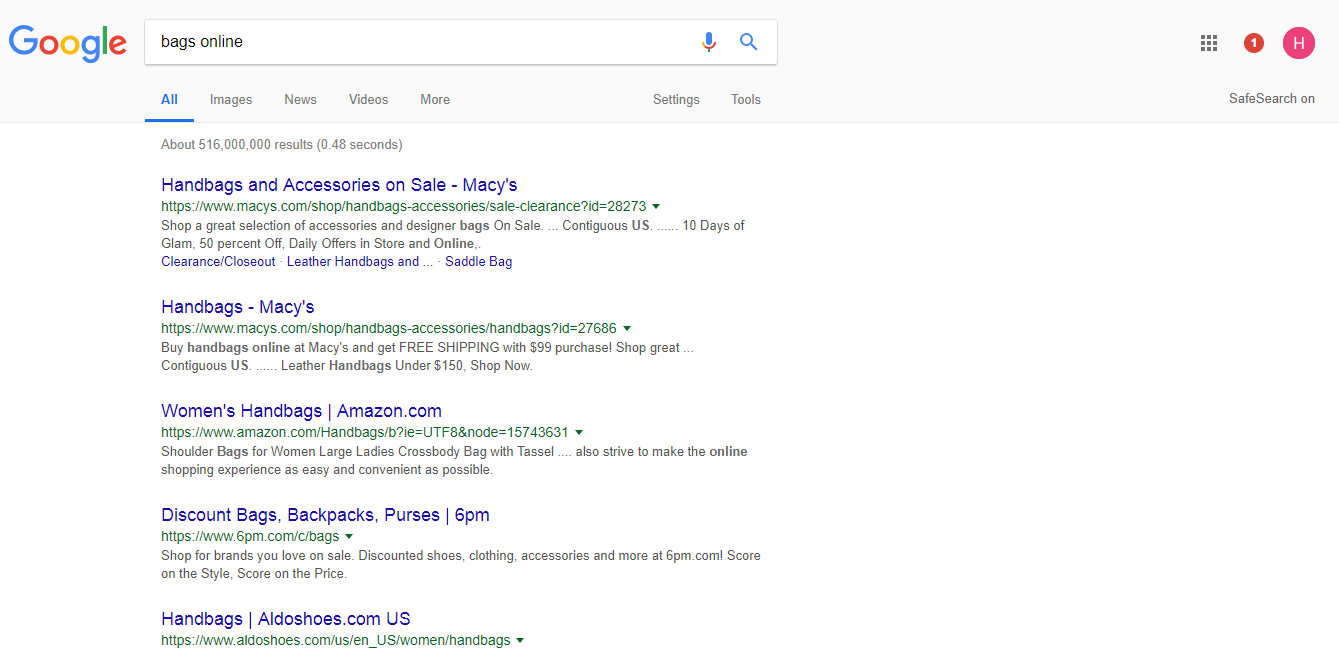

Now the question is how it is going to help your business growth?
Well, it’s simple!
When your website appears again and again in all these searches, you are actually gaining a good mindshare with your potential customers.
And since your website is appearing again and again in the SERP, they will trust you more than ever.
This is one of the most important reasons why SEO is important for your business.
Increased Credibility
Do you know why businesses want to appear on top of the SERPs?
Well, it’s not because they are sure that people will click on their website and buy from them.
Instead, they know very well that people searching a term on Google or any other website, are taking notes of their rankings in their head.
Most probably, they are not going to realize it, but unintentionally, they are doing it.
And your good ranking helps them in building their confidence on you.
In other words, the higher your rank on the SERP is, the more credible you are in the eyes of your potential customers.
There are 7 more reasons why SEO is beneficial for your brand credibility.
Increased Traffic
Obviously, only traffic cannot bring you money. But, would you like to set up your store on the backstreet of an unpopular market, or in the middle of Times Square?
People in the Time Square are not necessarily going to buy from you, but chances are high that they will remember you.
And most likely, when they want something similar to your product, they are going to reach you.
However, you have to play a vital role when a potential customer access your website.
You have to make every effort to sell your customers once they are there.
Most probably, people visiting your website are qualified leads – they are already looking for the service or product you are selling.
Therefore, it’s much easier for you to sell them.
Better ROI
SEO offers you a better ROI as compared to any form of offline marketing – in fact, this is true for almost all types of internet marketing.
Do you know why it is so?
It is because SEO is a type of inbound marketing.
You might be wondering what inbound marketing is?
Well, let me clear it for you. This marketing strategy allows you to
market your product to people who are already looking for the services or products related to your business.
Unlike an offline marketing strategy, you don’t need to interrupt them from watching their favorite TV show.
You will show up only when they are already looking for businesses like you.
You don’t need to convince your visitors that they need your product. You just have to convince them that you are the right business to make a purchase from.
In simpler words, with SEO, you have already won the battle even before it has started.
Quick Tip: Always provide valuable, fresh, and relevant content to your visitors and potential customers.
2) People & Search Engines
How do Search Engines Operate?
In this part of the guide, I will discuss how search engines work on the background.
A search engine performs its function in three steps:
- Crawling
- Indexing
- Picking the results
Crawling
Search engines send crawlers to websites to read the pages and other information there. These crawlers then create entries for a search engine to get crawled pages and other information indexed.
These crawlers are actually programs that are often known as spiders or bots.
Search engines usually send their bots to crawl web pages that are submitted by their owners as updated or new.
Are you thinking what I used to think?
Why these programs are called crawlers?
Well, apparently, they are called crawlers because they crawl only a page of a site at a time. They follow links on the page and keep following until they have read all the pages.
Search engines keep sending these bots on all sites regularly to keep their data updated.
Indexing
After the bots of search engines have crawled a website, it’s time for indexing.
Imagine the index as a large directory or a library that is full of websites and their data from every corner of the world.
Search engines usually take 1 to 10 days in indexing the pages their bots have crawled earlier.
Whenever you make a change in the content of a page or update it, these bots come again to crawl that page.
Indexing is important because a page doesn’t visible on the SERP until it is indexed.
Quick Tip: Check what pages of your website are already indexed by search engine using search term site:yourdomain.com
Picking the Results
Now here comes a tricky part.
Well, you do not play any direct role at this stage, but these results depend on your efforts that you have been putting in your website at the backend.
Once a searcher enters a query in the search bar, the search engine goes to its index and bring out the result that matches the query.
Picking up the results is a process in which search engines have to go through billions of websites and come up with results depending on various algorithms.
Although we know a lot of ranking factors, many algorithms are still not disclosed by search engines.
How People Use Search Engines
Now at this point, we are going to discuss the most important stakeholder of SEO – the searchers.
While doing SEO, you are not only making your website and content friendly for search engines, but it should be friendly for users as well.
It is good to invest your time and money to improve your technical SEO, but if your user interaction is not good, the position of your website will suffer on the SERP.
And then what will be the result?
All your invested time and money will start to be wasted.
Do you want this to happen?
I know, you DON’T.
So, what should you do?
You should prioritize the user’s point of view.
A searcher’s journey on Google looks something like this:
Need Information
Let’s say a person in XYZ part of the world is feeling hungry. He is craving for a yummy pizza.
But he doesn’t know the recipes. He knows no one who can tell him the recipe right at this time.
Guess who will come to the rescue?
Yes, you are right! Google
Search Query
He opens his device and starts typing the query.
Results
Google looked into its database and come up with the relevant results for this query.
Opening Websites
The searcher will start opening websites and try to find what he was looking for.
If he finds a good recipe, his search would stop there.
Otherwise, he will search again with a little change in his search query.
If we have a look at the history of the use of search engines, its use has been evolved in these years. However, the spirit remains the same.
People use search engines when they have a problem and they are looking for its solution. They also use them when they are unable to find answers to their questions.
3) Classification of Search Queries
Generally speaking, search queries can be classified into three types:
- Informational search queries
- Navigational search queries
- Transactional search queries
Informational Search Queries
If a person is looking for a piece of information and uses a search engine to find it, we will call this query informational search query.
This person does not want to access any particular website, instead, he is looking an answer to his question or guidance about something.
For instance, “what is the time in New York”?
Navigational Search Queries
When people use a search engine while looking for a particular brand or a website, their queries are known as navigational search queries.
Usually, people don’t use their browsing history and bookmarks, instead, they write YouTube or Google on the search bar.
Along with many other Google, YouTube, and Facebook are some of the most used navigational search queries.
Transactional Search Queries
As the name suggests, people use this type of theory with an intention to make a transaction.
Mostly, this type of queries come with a brand name (Apple, Nike etc.). It can come with a category as well (e.g. heels, bags).
Even you can target any particular category of search queries using the power of SEO.
Quick Tip: You can easily convert an informational query into a transactional query by giving an option to make a purchase.
4) Different Types Of SEO Techniques
Do you want to see your website blooming for longer? Or are you expecting it to be successful for only a shorter period?
Obviously, if you are working hard on something, you need to see it prosper and succeed.
This same goes for SEO. Some people prefer to make a couple of hundred bucks quickly while others are in for their passion and a long haul.
If you want SEO to do something to get you rich quickly, you might end up with black hat SEO.
Black Hat SEO
This type of SEO is actually only for the search engines and not for catering to real humans and their problems.
There are various illegal ways to ditch the search engine and rank your site quickly on the SERPs, and black hat SEO is one of these primary techniques.
The result is a bunch of spammy pages that get banned by the search engines often quickly. Not only these pages get banned, but it may also lead to the punishment for the marketer.
Although black hat SEO can help you in making few bucks quickly, it can ruin your future of making something sustainable.
This SEO technique snatches away your peace of mind as well.
As you need to keep a close eye on each and every update of the search engines and come with a new way to dodge them.
Some basic strategies of black hat SEO include:
- Stuffed keywords
- Duplicate content
- Invisible text
- Redirecting your visitor to another page or website
- Links to a website without any relevance
However, if you are looking to build something sustainable, you need to follow white hat SEO.
White Hat SEO
The main focus of this SEO technique is the human audience. By applying white hat SEO techniques, you can build a sustainable business without any fear of getting banned or penalized.
With white hat SEO, it may take a little more time to get your website ranked, but once it does, you don’t need to worry about being taken down by the search engine.
You provide quality content to your visitors by following the rules made by the search engines. You make this content easily accessible for your audience.
The strategies you can follow in white hat SEO are:
- High-quality relevant content
- Images with proper labeling
- Links relevant to the website and content
- Standard HTML
- Relevant yet unique page titles
Inbound marketing has a good article explaining white hat SEO vs black hat SEO.
However, life is not easy.
There is a way between the white hat SEO and black hat SEO – usually, people call it Gray Hat SEO.
As its name suggests, it is something in between black hat and white hat SEO.
Quick Tip: Pay close attention to Page Titles and descriptions as this is the first thing Google notices while crawling.
Gray Hat SEO
Simply putting it together, gray hat SEO is not as innocent and pure as white hat SEO, but not as egregious as black hat SEO.
In this type of SEO, you are not playing with the rules of the search engines, but you are trying to take an advantage.
Actually, Google’s rules (as it is the main search engine usually people want to rank their site on) are not crystal-clear. You may find a little contradiction in their rules as well.
Let me explain it with an example:
According to Google, it is not a big fan of link building using guest blogging.
Now, what if you are guest blogging just for the awareness of your target audience?
What if you are doing it to grow your brand?
What if you are doing guest blogging to generate quality traffic for your website?
These are the legit reasons and this is one of the many reasons Neil Patel endorses guest blogging.
Some people may tell you that this is not the right way, but you know this is the fun part about SEO.
Different people try different methods to achieve ONE goal.
Moreover, SEO keeps changing. There are no well-defined rules for it.
Most of the rules we know about SEO are just looking at the data trends.
This is the reason many people see a great potential in gray hat SEO.
Some of the classic techniques such as providing scholarships for link building is also a gray hat SEO technique.
We are not here to declare gray hat SEO bad or good. This is something you have to decide.
Many of your competitors will do whatever it takes to rank their site on the top of the SERP, pushing you all the way down.
Therefore, you need to choose your own path and decide up to what extent you can accept a challenge.
5) How To Structure Your Website
On-Page and Off-Page SEO
There are two main categories of SEO: on-page SEO and off-page SEO.
On-page SEO consists of all the ranking facts that search engines determine by looking at the page which you are trying to rank.
This includes the page title, headlines, page structure, and content.
Whereas, off-page SEO refers to all other factors that a search engine (especially Google) looks for. These factors are not exclusively in your hand and depend on other sources.
These include a social network, your competitors, and most importantly, the history of the person searching.
They both are different for sure, but to do well in SEO, you need to take care of both.
Try to understand it this way.
If you have done good on-page SEO, but null off-page, you wouldn’t get much traffic in the first place. Even if someone finds you on the SERP, they will hesitate in visiting your site and trust you (if it is found on 9th or 10th page).
Similarly, if you have good off-page SEO, but zero on-page SEO and no good content, your site will surely get visitors, but they will leave it without exploring it any further.
And this is devastating from an SEO point of view.
When a visitor closes your website instantly or just after viewing one page, Google calls it to bounce.
The higher the bounce rate, the worse your rank on Google will be.
This is the reason, you need to do both on-page and off-page SEO.
Now we will take a look at both these categories separately.
On-Page SEO
We will go through detailed explanation of On-page factors:
Content
This is the first and the most important category.
In 1996, Bill Gates predicted, “Content is king”. This is still true.
Do you know why it is so?
Well, it is because Google considers its users happy when they find content what they are looking for.
 It doesn’t look only for the “easiest” recipe, “quickest” recipe, or just come with a bunch of online shops offering “delicious chocolate chip cookies”.
It doesn’t look only for the “easiest” recipe, “quickest” recipe, or just come with a bunch of online shops offering “delicious chocolate chip cookies”.
The priority of Google is to provide you with the best content it can find for your query.
It means that if you want to do well in SEO, you first need to create great content for your audience.
Does it sound difficult to you?
It is not. But yes, you need to put efforts.
Good results do not come without great efforts.
Just like the best marketing strategy cannot help you in selling a bad product, the best SEO strategies will be useless to you with bad-quality content.
Some factors that can help you in making your content good according to Google’s rules are:
Quality
Although the time has gone when only delivering quality content can make you stand out in the crowd, it still is the best thing to start your SEO with.
In fact, it is a starting point of any online business.
But it is not as easy to come up with quality content as many people think. You need to teach your audience, and for this, you need to be good at it.
However, it is also not as difficult as many people think it is.
There’s a lot of material online. Research your niche well and come up with content that is in-depth and explains the topic to the readers.
If you want to create content on your own ideas – well and good. Brainstorm your idea and come up with compelling content with a catchy headline.
Keywords
For producing content, you need to do keyword research up-front.
It’s simply because you need to use keywords in your headline and throughout the article.
If you already know about keywords and how to research them, it’s good. However, if you are a newbie, and you don’t know about it, HubSpot’s How to do Keyword Research for SEO: A Beginner’s Guide is a good read.
This is one of the factors for producing quality content that you have to spend the most time on.
Don’t take keyword research lightly.
It doesn’t mean that you have to spend thousands of dollars on courses or whatsoever. Keyword Research for SEO: The Definitive Guide by Backlinko is enough to understand the whole game.
Use of Keywords
Google is smart.
While it is important to use your keyword throughout the content, you cannot just pack your content with keywords. It will hurt your ranking instead of improving it.
Don’t stuff your content with the keyword.
Want to know why?
Read Why Keyword Stuffing is Bad for SEO.
Google has become smarter in interpreting what searcher is asking for. It not only understands it but also gives you options when you type a query on the search bar.

When you place your keyword on all the strategically important places like URL, headlines, and meta description, you don’t need to stuff your content with keywords.
Content Freshness
Posting content frequently on your website helps in improving its rank on Google. However, this is only one of the ways to give Google a signal about the freshness of your content.
There are many other ways you can do make your content fresh and up-to-date.
For Brian Dean of Backlinko – a big name in the SEO world – posted around only 30 posts in two years. But he kept them fresh by rewriting them and adding information to them as soon as he finds some.
Although it is important to post regularly, you can get the same results by posting once a month but making it a thorough and in-depth post.
Direct Answers
You may have noticed sometimes Google show direct answer to your query right on top of the SERP.
 If you can create content is plain language and convince Google to recognize it as a direct answer to a query, it will show up right under the search bar.
If you can create content is plain language and convince Google to recognize it as a direct answer to a query, it will show up right under the search bar.
Last year, Matt Cutts – former head of spam team of Google – announced that use of simple language and avoiding jargon can help people keep their websites on track.
This is the reason detailed guides have become more popular in the recent past few months.
Therefore, you need to clear up your writing. Avoid using fancy words and complex sentence structures, as they are not going to help you in ranking your website on Google.
Consider all these aspects listed on Moz to write compelling copy that resonates the direct answer policy of Google.
Quick Tip: Identify users’ preferred format of the answer and then format your content accordingly. Include answer in a way that it is easy to find within the content.
HTML
You have researched keywords and created content for your business.
Now what?
Once you are done with the above two things, it’s time to pay attention to the HTML.
Although you don’t need to be a professional programmer, running your website without the basic knowledge of HTML would be something like driving a BIG truck without knowing anything about traffic lights.
But don’t worry if you know nothing about it.
There are online resources that you can use to learn what you need to know about HTML in a blink of an eye that too without paying a penny.
A couple of these websites are Khan Academy and Codeacademy. You can easily learn HTML on these sites and apply your learning on your website.
And yes, by the way, you can also use this simple sheet to know about it.
Now, let me take you through four important parts of the HTML that you need to optimize for each and every piece of content you produce for your website.
Title Tags
Do you know what title tags are?
Well, these are the counterparts of newspaper headlines. These title tags appear on the tab when a user opens a page of your website in the browser.
The tag that appears on the tab is called title. However, when it comes to the blog, it becomes h1-tag which means first order heading.
Every page of your website should have only one h1-tag, so it is clear to Google that what title is.
Meta Description
The meta description is the snippet that appears right beneath the link of your website when Google shows your result on the SERP.
You can easily spot which websites have done proper SEO by analyzing their snippets.
 If your meta description is properly optimized, Google will show complete sentences as a snippet and not “….” at the end of the snippet as shown in the image below:
If your meta description is properly optimized, Google will show complete sentences as a snippet and not “….” at the end of the snippet as shown in the image below:
 You can easily learn to craft a great meta description with the help of a short video by Quick Sprout University.
You can easily learn to craft a great meta description with the help of a short video by Quick Sprout University.
However, don’t over think this meta-description. While writing it, keep searches in your mind instead of search engines.
For coming up with a great meta-description, you can also use the Yoast SEO Plugin. It is one of the best plugins available in the market.
This plugin has a lot of time-saving features, and the best part using it they update it almost every week.
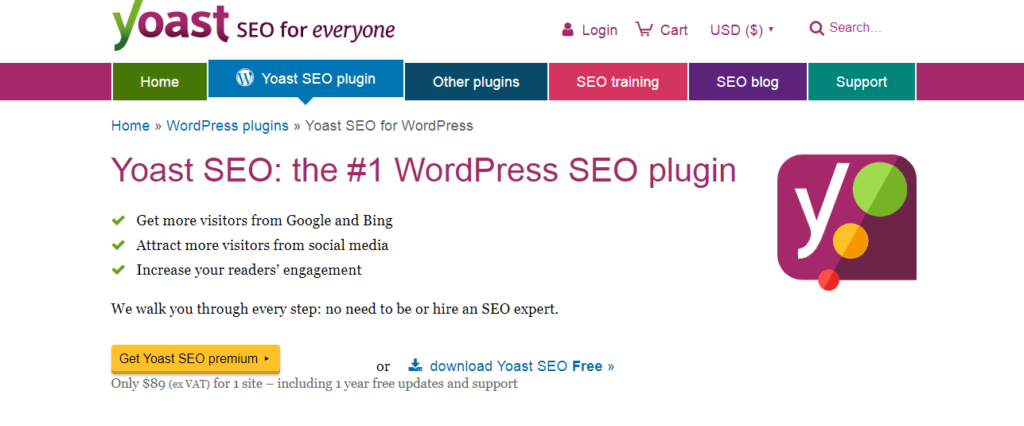 Schema
Schema
This is something resulted as a collaboration of different search engines.
It is actually a subset of HTML tags that will help in improving the way search engines show your content on the SERPs.
For some great tips on how to get your schema on track, you can use these tips listed by Moz.
After doing it, don’t forget to test your page to make sure that everything is running perfectly.
Subheads
The subheads are one of the most important things that every page needs to have.
They are not only important because they help in formatting, but they are helpful in providing your readers with a reference and do affect SEO as well.
Subheads do have less importance than h1-tags, but still, they are important. Not only h2, but h3 and h4 also play an important role in SEO.
Architecture
Another important aspect of on-page SEO is the architecture of the website.
This part of SEO is a bit techy, there are some things that everyone can do to improve the rankings of their website on the SERP.
What is the importance of good architecture to a website?
With a good architecture, you can give a great experience to your visitors when they navigate through your website.
This part of SEO depends on a few things such as fast loading time, safe connection, and mobile-friendliness.
Ideally speaking, you should map the architecture of your website even before you buy a domain. It helps you to get into the head of your user. You can then easily reverse engineer the user experience.
Quick Tip: Linking your logo to your home-page is a simple way to improve the user experience.
To rank your website better on the SERP, make it easily accessible to Google. In this regard, you also have to take care of certain things.
Easy to Crawl
Google send crawlers to pages of your website whenever you post a new one.
Now depending on how easily these crawlers can crawl different pages of your website, they go back to Google and report that you are a good result to include in the SERP.
The more internal links (relevant links from your own website) on your page, the easier it will be for the crawler to go through your website.
It will help in giving Google a better understanding of your site.
Therefore, making your website easier for crawlers to crawl is vital.
Google XML Sitemaps is a simple plugin of WordPress that can facilitate Google’s crawling on your website by creating a sitemap.
Duplicate Content
You might have heard a lot about how duplicate content on your website can hurt your ranking.
Well, this is true – but only half true.
The truth is; re-posting your content on other websites or republishing your guest posts on your own website does not hurt your SEO – as long as you are not doing it in a spammy way.
So, all you need to do is to deal with duplicate content smartly.
Mobile Friendliness
If your page is not mobile-friendly, you already have lost it.
More than 54% of Facebook users access their profiles using mobile devices. Considering the fact that Facebook has 1.6d billion active users, this number is not less than 900 million mobile users.
While mapping out your website, keep following things in your mind regarding mobile-friendliness.
Although there are several ways to check mobile-friendliness of your website, I prefer using Google’s Mobile Friendliness Test for mine.
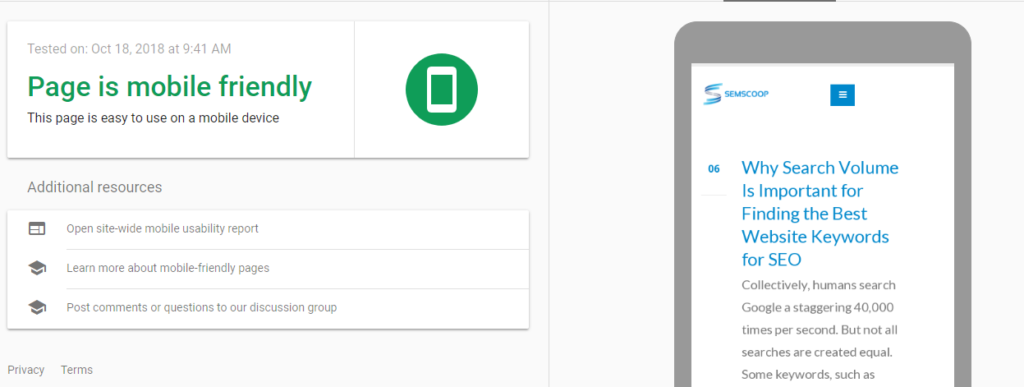 Usually, all themes of WordPress are already mobile-friendly, even if they are not, use of a simple plugin can take care of it.
Usually, all themes of WordPress are already mobile-friendly, even if they are not, use of a simple plugin can take care of it.
Page Speed
Now, this is something obvious.
Don’t go far, take your own example. How frustrating it is when you click on a page and it takes more than 10 seconds to load?
Doesn’t those 10 seconds look like ages?
People today value nothing more than their time. And long loading time can adversely affect your conversions.
According to a recent research of Google, if your site takes more than 7 seconds to load, the bounce rate can increase up to 113%.
Quick Tip: Page speed also depends on the website hosting company. Use a trustworthy and quality hosting company to maximize your page speed.

Use Test My Site by Google to check load speed of your website. It will also guide you what you need it to make it better (if it is not already).
 Pingdom is another good resource to check your load speed.
Pingdom is another good resource to check your load speed.
A good thing about this tool is you can check the speed of your website using different locations of the world for multilingual users.
At Crazy Egg, you can find several ways to cut out extra seconds to speed up your website.
Keywords in the URL
This is important from an SEO point of view.
You might have to change your permalinks’ structure on WordPress, and you also have to keep in mind that these URLs are for humans, but still, you must use keywords in the URLs.
HTTPS and SSL
Google now sees the security of a site as a signal for ranking.
And Google has not stopped there.
It has now started giving a warning to people when they try to visit a site that is not secured.
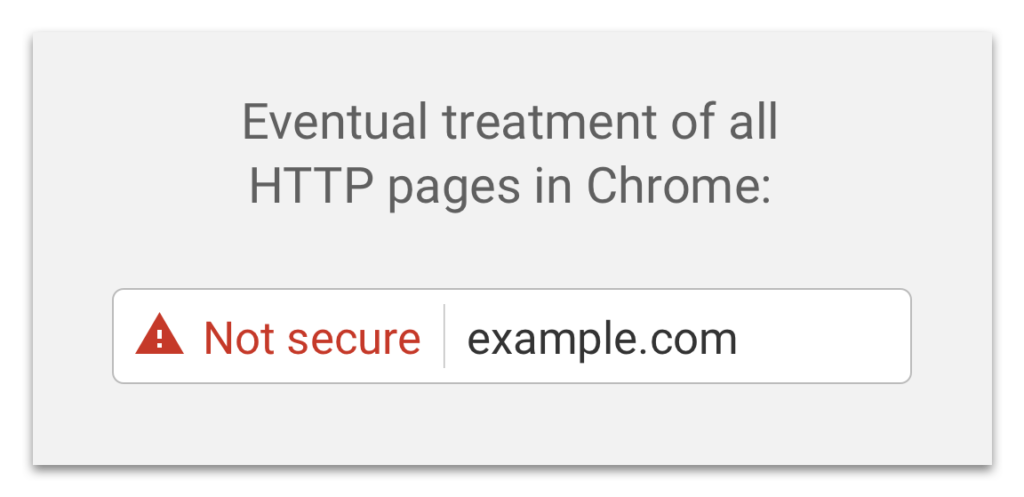 These warnings tell people not to give their personal information to these sites – including their credit card numbers. Now you can imagine how your unsecured site could be a hurdle in increasing your revenue.
These warnings tell people not to give their personal information to these sites – including their credit card numbers. Now you can imagine how your unsecured site could be a hurdle in increasing your revenue.
Now it could be a big problem, as chrome is one of the most used browsers in the world.
However, there are two security portals that you can use. HTTPS (a secured version of HTTP) and SSL which is a short form of Security Socket Layer.
Both protocols are useful, and you can consider both.
Although it doesn’t play a direct role in the SEO of your website, it will surely play an important role in decreasing the bounce rate.
Moving an unsecured website to SSL or HTTPS requires quite a bit of effort, but it’s worthwhile.
If you are planning to start a new domain, you can buy SSL or HTTPS as an option from your web-hosting company.
Sitemap
The sitemap of your website helps search engines to crawl your website.
Actually, this is a file in which all sections of your website are listed.
Although it is good to have a sitemap for your website, it’s not necessary.
However, if you have a large website with many pages or media-rich content, it is better to have a sitemap.
Your ranking on the SERP will not be affected by the presence or absence of a sitemap.
Quick Tip: Sitemap of a website should not contain more than 50,000 URLs, and its size should not be more than 50 MB.
Robots.txt
If you don’t want search engines to index some of your web pages, you need to use robot.txt.
This file tells crawlers of search engines which sections of a website they don’t need to crawl.
It is located at:
https://www.yourdomain.com/robots.txt
By the way, this file is public, and anyone can see it.
Using this file is beneficial when you don’t want some of your scripts, unnecessary images, or any unwanted files to be indexed.
The syntax of robot.txt is:

6) Off-Page SEO & Link Building
There are five basic aspects of off-page SEO, we will discuss them one by one.
I)Trust
Trust can be built by (Page Rank – Authority of the Site – Bounce Rate – Domain Age – Identity)
Page Rank
– a way to measure the importance of pages of a website – is not the only factor that Google considers while ranking websites on the SERP.
The recent updates of Google have hit many obscure and spammy sites badly.
Quality backlinks from some authoritative sites like .edu and .gov domains can help in building trust. Basically, there are four things that can help you in building trust and building links.
Authority of the Site
It takes two kinds of the authority of your site to determine overall authority by Google.
- Domain Authority – tells how well your domain is known. For instance, coca-cola.com is an authoritative site as almost everyone known about it.
- Page Authority – relates to the authority of the content of a single page, e.g., a blog.
Check the authority of your site by this tool and take necessary measures to improve it.
 Use these tips to improve the authority of your website without any cheating.
Use these tips to improve the authority of your website without any cheating.
You might be thinking if there is a simpler way!
Well, yes. There is one simpler way out.
High-quality editorial links can help your site gain authority.
Like, what it could be?
Try to do things in a way that mainstream media websites like to feature you.
Yeah….it’s not easy.
It not only takes too much effort but takes a lot of time as well.
But it’s worth the effort and time. Once you are featured on these sites, you are going to enjoy benefits in many ways.
Bounce Rate
The bounce rate of your website is the number of people leaving your website immediately after viewing only one page of your website.
Content on your website, its loading time, and attracting the right audience; these all might be the factors of decreasing or increasing your bounce rate.
This short video of Neil Patel walks through the process of decreasing the bounce rate.
Domain Age
Have you heard:
“Old is Gold”
Same is true for domains.
Although domain age matters only a little, it DOES MATTER.
Quick Tip: Consider buying an old expired domain at an affordable price. It helps with domain age.
Identity
As we already know that personal online identity and brand give a green signal of trust to search engines.
Obviously, it takes time.
So, what to do?
For developing the trust of your website, you don’t necessarily need a brand name. Creating your personal brand can be helpful as well.
The best part
Creating a personal brand can help you in preventing your website from penalties whenever Google updates its policies.
Branding is also important because usually, people prefer brands they know over those they don’t know.
Having said that a brand that people can recognize easily is more important than the price or even quality of the product.
II) Links
While you are more than halfway to the end of this premium SEO guide, I am sure you have got an idea that the common concept “backlinks are everything” is not correct.
No, I am not saying they aren’t important. They surely are.
But there are plenty of ways to get quality backlinks.
Whatever you do, just don’t sit and wait for other people to get their websites linked with yours.
You need to move forward and ask them for this links, and keep monitor them using free backlink checker.
Broken incoming link building is another quick-win when it comes to ensuring your website makes the best use of the domain authority it enjoys from the ranking power passed on from other sites. One of the easiest ways to channel that power towards your target pages is to download a list of URLs that have incoming links from other sites, identifying the URLs that no longer host any content. Then simply create 301 redirects to the pages you want to rank.
Freelance SEO expert Martin Wilson of Albion marketing agency in Brighton claims it is one of the first things he does to help his client’s site regain the Google rankings that have been lost due to site migrations and amends that cause web page URLs change over time.
While asking for backlinks, consider the following three factors:
III) Quality of Link
Although I said earlier in this part that links are not everything, their quality is!
In fact, the quality of a link is far more important than the number of links your site has.
If you are wondering how to get quality links, let me explain.
You need to reach the right resources and offer them value in exchange of a solid backlink to your website. These advanced ways to get quality backlinks might help you as well.
Usually, people are more concerned about the number of links.
However, this approach is wrong. And this is wrong for some reasons:
- Search engines will easily ignore that huge number of links if they are spammy or low-quality
- Links from new sites are more important than repeating links from the existing sites (sites that are already linked with your website)
- External links (from other sites) are more important than internal links
In other words, having only a couple of high-quality links matter more than a dozen of low-quality links.
IV) Anchor Text
The text that other websites use when they link to your website is known as anchor text.
And yes, it really matters.
There are different types of anchor text but only one rule of thumb,
The more nature anchor text, the better it is!
V) Number of Links:
Last but not the least – the total number of links your site has also matter.
But, you need to create high-quality backlinks to your website.
Because at the end of the day, the more high-quality links your website has, the better are the chances to rank higher.
Quick Tip: Try to link that page of your website which has the highest conversion rate.
7) Keyword Research For SEO
We have briefly discussed keyword research in the previous section, but it needs to be discussed in detail because of its importance.
So, what makes keywords that important?
Ummm….it is because 90% of SEO revolves around the selection and use of appropriate keywords.
Did you get it?
Or if I try to put it differently, it will be
Keywords tell Google that what a piece of content is all about.
They describe your brand and tell people what you call your website.
Keywords also guide you how to build links – from strategies you choose to how you implement them.
There is a common mistake many people make. What is it?
They stop.
They come up with a design or a marketing strategy, update pages of their website, and then? They stop!
They stop because they think that keyword research is an only a one-time job. However, it’s the complete opposite.
Do you know what you need to practice standing your website out in the crowd?
Constantly doing the keyword research.
The SEO gurus keep reevaluating their keywords on the existing content to check if those keywords are still useful or not.
Common Mistakes with Keywords:
Now let’s take a look at how some people make mistakes with keywords:
Mistake Number 1 – Selecting the Wrong Keyword:
Imagine you are selling marketing software.
It costs your customers $9000 a year.
It is only $750/month, not much expensive. But, still, everyone cannot afford it.
Now if you are ranking #1 on “free marketing tips for small businesses”, what type of audience are you attracting?
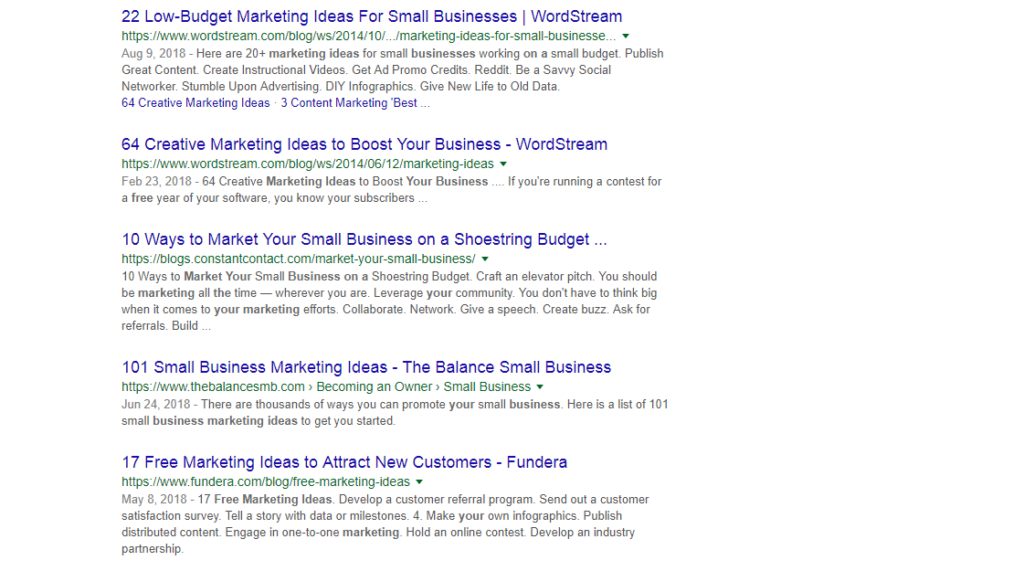 Your visitors will be people who are looking for free marketing tips. And guess what?
Your visitors will be people who are looking for free marketing tips. And guess what?
They are not ready to pull their credit cards to buy your software.
That keyword will likely to send thousands of visitors to your website every month.
But….that audience is not what you are looking for.
It is the wrong audience.
And thus, it is not worthwhile to rank for this keyword.
You better pick a different keyword even if it sends you only a few hundred visitors every year.
Because here you need prospects – your ideal customer – not just visitors.
Think like this:
Thousands of visitors each month with 0 sales.
OR
400 visitors that convert 98%.
What would you prefer? Obviously, a few hundred visitors that convert instead of thousands that are not going to give you a single penny.
Therefore, choose your keyword wisely keeping your ideal customer in mind.
Mistake Number 2 – Ignoring your Competition
You have found the right keyword from SEMScoop Keyword Tool.
It is relevant to whatever your website is about, and also resonate to what you want to sell.
So, what you need to do next?
Open up Google Keyword Planner or SEMScoop, and type a few ideas to get the results.

Naturally, you will start leaning towards keywords with maximum searches.
But here’s the thing.
Ranking for a keyword does not only depend on your content and other factors, but it also depends on your competitors you are working against.
For example, in the image above, the keyword we looked for is shoes USA.
The results show that it is very difficult to rank for this keyword
A second approach many people take is they choose long-tail keywords.
They assume that as these keywords have low search volume, it would be easier for them to rank for that keyword.
However, this is not always the case.
Let’s take the example of “digital marketing agency”.
 The search volume is only a few thousand each month. So, it seems that it would be easier to rank a website on this keyword.
The search volume is only a few thousand each month. So, it seems that it would be easier to rank a website on this keyword.
But there is still a problem.
Check out the competition.

All the other websites ranked for this keyword are old.
They have hundreds of links, for some websites, this number might be in thousands.
What do you get from this analysis?
Ranking your website for this keyword is as difficult as it was in the first example.
It would be even more difficult in this case because of the competitors.
You would hardly get any traffic.
The search volume for this keyword is quite low given that high competition level.
So, choosing this keyword would also not be wise, especially, if you are starting out with a new venture.
Now you might be thinking: How on the Earth you can find keywords:
- In relevance to your business?
- Not too high in competition?
- Provide enough traffic that worth your effort?
That’s a really important question.
What is the answer?
Well, to overcome this problem, you need to think OUTSIDE THE BOX.
How?
Let’s us dig in that.
Keywords Research Tip – Stay Focused on Search Intent:
You might be thinking what search intent is.
Let me explain.
Usually, while playing with SEO, people focus on keywords.
This is what you are also planning to do. Right?
But what if I tell you that instead of focusing on what people are typing in the search bar, try to identify what they are looking for.
This is called search intent.
Search Intent is the difference between driving a fraction of web traffic and getting the REAL REVENUE!
Let me explain it with an example:
You own a real estate website.
You get paid when people run their property listing on your website.
It means that you should have a good ranking for real estate so that people come to you instead of going to Zillow or to any other website.
The more people get the property through your site, the more you will earn.
But in the below image see what happens when someone searches for a house for sale.
 These results show houses of all types from all over the country.
These results show houses of all types from all over the country.
Some are furnished apartments while others are in another state.
Now, this is where you need to find the search intent of the searcher.
Try to figure out what exactly a particular searcher is looking for? Which type of home does he need and in which state?
The good thing is, this problem can be overcome by using good keywords that too are not very competitive.
Zillow.com might be a very tough competitor to compete with, and therefore, you need to look for other methods.
Firstly, look at the suggestions made by Google for this query:
 There are many terms that people use to look answers for their queries.
There are many terms that people use to look answers for their queries.
You can pick any one of them and rank your website on it.
Need more ideas?
Scroll down to the bottom of the Google search page, you’ll get some other good keywords.
 You cannot only use various keyword tools to get a bunch of keyword ideas, but you can also use the ideas generated by Google itself.
You cannot only use various keyword tools to get a bunch of keyword ideas, but you can also use the ideas generated by Google itself.
Another great tool to get some good keyword ideas is AnswerThePublic.
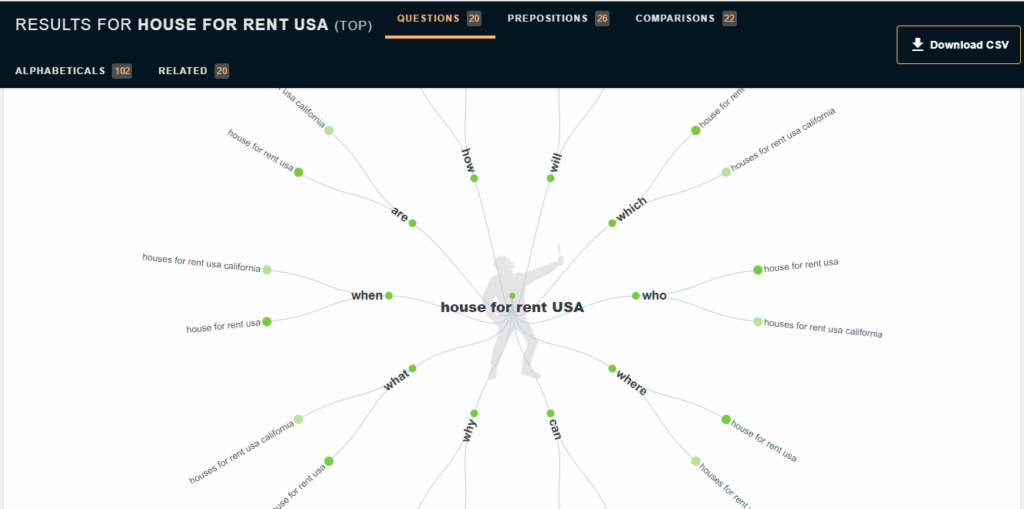 This tool uses real queries to build a list of keywords for you to do work on.
This tool uses real queries to build a list of keywords for you to do work on.
Doing a proper keyword research and coming up with one that has a large enough search volume to get you decent traffic will not only help you in increasing your ranking on the SERP but also earn a lot more revenue.
Now, as we have gone through all important points of on-page SEO, now its time to have a look at off-page SEO.
Quick Tip: Analyze your competitors’ keywords and work on finding out ways to outrank them.
8) Creating a Winning Content
Now at the end of this guide, raises an important question:
What type of content should you make?
In general, the answer to this question is unique.
Creating fresh, in-depth, and engaging content is the key to come up with winning content.
And most importantly, your content should be problem-solving.
There are various content types that you can create for your website. These include:
- Blogs – are one of the most popular types of content. An engaging good content is not necessarily too long.
- Product Pages – are especially useful for e-commerce businesses, but almost all online businesses need quality product pages.
- Reviews – are one of the recent popular categories of content. You can write a review of almost anything related to your niche.
- Case Studies – tend to tell people story of, usually, a business or a strategy. It’s not necessary that a case study is about a successful business, it could be about a failed startup as well.
- Infographics – are easy to understand graphics that almost everyone likes. The key to creating a good infographic is to make information easy to understand in a few words.
- Top Lists – are another popular type of content. This type of content is easily shareable on social media.
- Interviews – can be published on your website. Interview someone who has a good experience in a field (particularly relevant to your niche) and publish it.
- Videos – are gaining so much popularity these days – thanks to social This category of content can increase your conversion rate by 80%.
- E-books – are usually used to generate leads. This is a useful type of content that can help you in building and expanding your e-mail list.
Conclusion
I hope after going through this detailed guide, you are now fully aware that SEO is not an optional for online success.
It does take a little effort and a good chunk of your time to get some basic things straight, but not doing it will literally kill your online presence.
If you have already made some SEO decisions in the past which were wrong, don’t worry!
It’s never too late.
However, do proper research before you start writing your next blog. And try to apply all the things you have learned so far.
With all the research and hard work, your next post might help you stand out in the crowd – YOU NEVER KNOW!
What changes are you going to make in your SEO strategy after going through this guide? Do let me know.



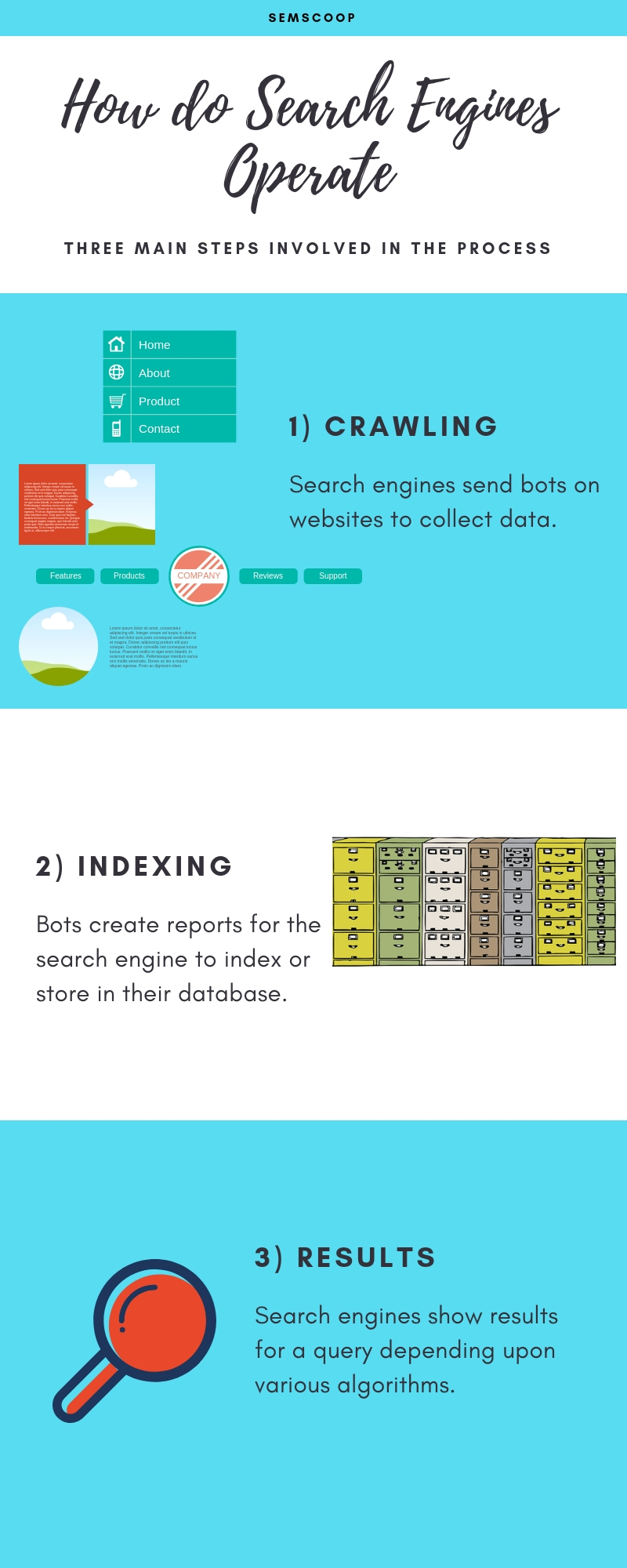

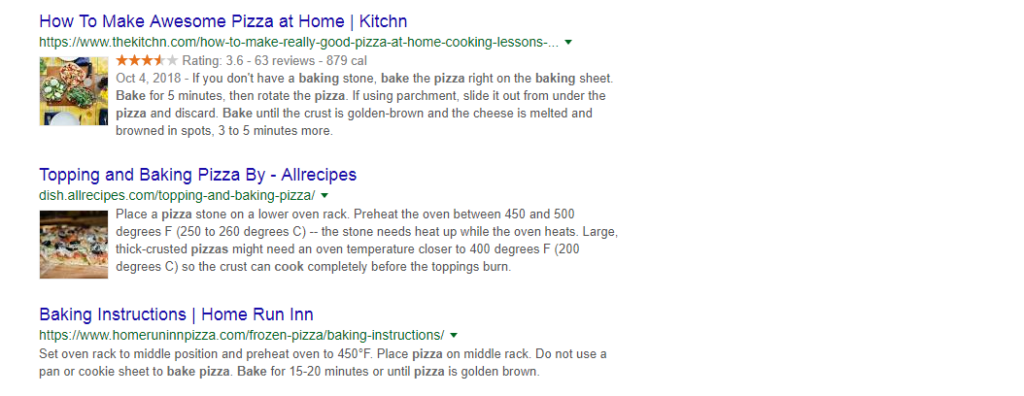


Comments (2)
Hi Amir
Thanks for this article, contain lot of Information about SEO, with your deep analysis its very helpful for newbie and powerful for experts.
Regard.
Excellent post and information about SEO. I am learning SEO for my website and thanks to this article. I will try to apply all the suggestions provided in this article. Thanks
Comments are closed.